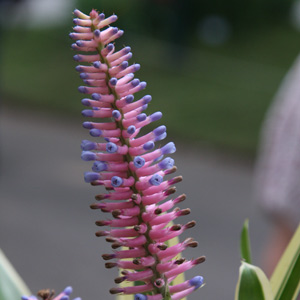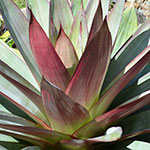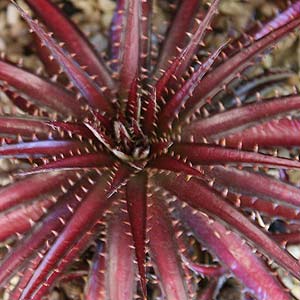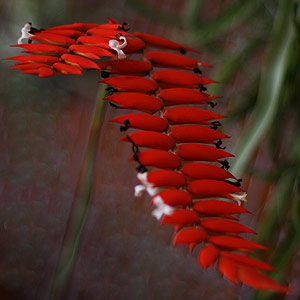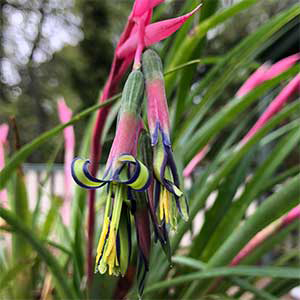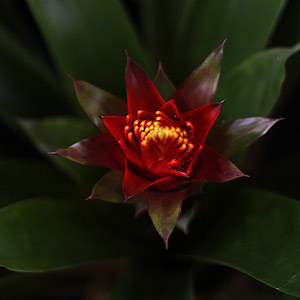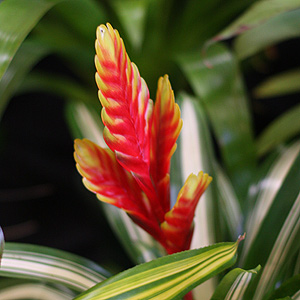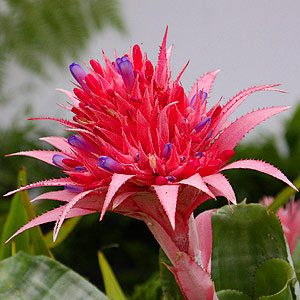
With so many types of Bromeliads available for sale it is surprising that in general they are an easy care plant.
Bromeliads can be grown both indoors and outdoors, and many varieties cope with a wide range of climatic and soil conditions. One common factor is drainage, all species require good drainage.
And as for popularity, rather naturally, zones where they can be grown easily outdoors, including many areas of Florida, California and Texas lead the way, however bromeliads are also very popular in New York where they are widely grown as indoor or house plants, perhaps more correctly as ‘office plants’.
Basic information
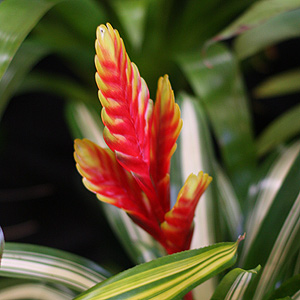
With such diversity in flower and foliage form it is easy to see why these plants are so popular we are frequently asked a few ‘common’ questions about growing conditions and although it might seem simple, if you look at the natural growing conditions the answers are fairly clear.
All bromeliads are either epiphytic or lithophytic, and this simply means they naturally grow on trees or rocks. From this we understand the drainage requirements, bromeliads do not like wet feet. They can certainly be grown in the ground, but they need good drainage.
We then have lighting, most are used to growing in dappled shade, so good indirect light is a requirement. Nearly all do not like frosts.
Humidity and watering is another factor, most grow in humid forest conditions, but don’t get me wrong here, many have low water requirements as well.
Care
Bromeliads (plants and pups) need a well drained soil, they do well in pots or in the ground. With so many species are available for sale, most are rainforest plants so lighting and humidity needs to be suitable.
In pots bromeliads do well in a fine orchid mix or even course sand. But remember bromeliads also like a humid environment, around 60% humidity is ideal.
Tank bromeliads, are a variety that hold water in the center, these like to be flushed out once a week.
We look at Bromeliad Care in detail.
Bromeliad Varieties
More Bromeliad Type and Varieties
- Aechmea
Species include: andersonii, chantinii, fulgens, fasciata, primera, nudicaulis and blanchetiana. - Ananas
Species include: bracteatus, comosus, mordilona, nanus, pyramildalis, strictus and viridis. - Billbergia
Species include: amoena, leptopoda, morelii, nutans, pyramidalis,rupestris and vittata - Catopsis
Species include: berteroniana, morreniana and paniculata - Cryptanthus
Species include: bivittatus, bromeliodes and zonatus - Deuterocohnia brevifolia forma chlorantha is commonly called the ‘Argentine Ball’
- Dyckia
Species include: brevifolia, fosteriana, remotifolia, fragrans, platyphlla and rarifolia - Guzmania
Species include: rana, lingulata, conifera, monostachia and sanguinea - Neoregelia
Species include: augustifolia, bahiana, brownii, carinata,spectabilis, carolinae. - Nidularium
Species include: fulgens, innocentii, longiflorum, procerum, rutilans and regeliodes - Portea
Species include: alatispela, fosteriana, grandiflora, petropolitana and silveirae. - Tillandsia
Species include: cyanea, usneoides, ionantha, recurvata, dyeriana and bulbosa - Vriesea
Species include:splendens, imperialis, christiane, hieroglphica, splenriet and fosteriana
Propagation from seed or pups.
- Bromeliads are easily propagated from pups, new plants thrown off by the parent plant.
- Wait until the pups reach a good size and the separate them with a sharp knife.
- Leave the pup in a shady spot for a day or two to harden off, and then plant out.
- Remember that most bromeliads only flower once, so make sure you keep the pups and you will have an ongoing show without having to buy new ones.
Bromeliad plants and pups are available for sale online from specialist bromeliad nurseries and many types are popular with home gardeners and landscapers alike.
